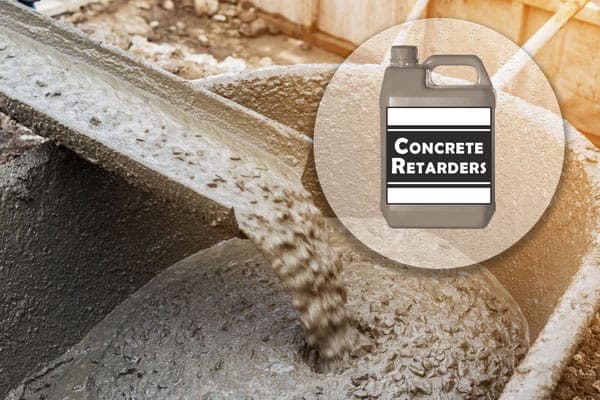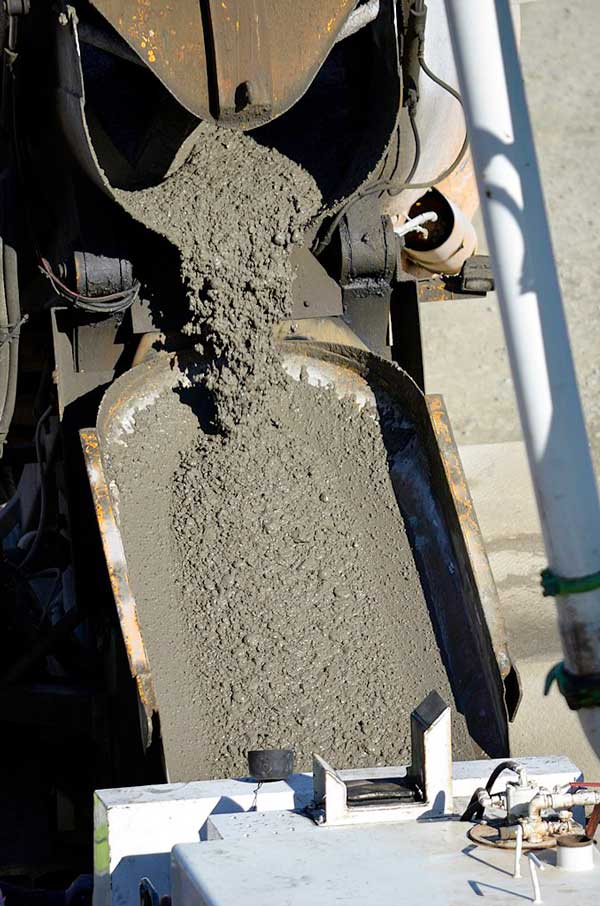
The modern-day material chemistry has revolutionized all industries, and concrete is also not an exception. Adding few ml of chemicals to concrete modifies the property of concrete to a larger extent, and hence its application is increasing day by day.
Concrete is the most used material in the construction, made of cement, sand, aggregate, water, and concrete admixtures. The concrete admixtures or concrete additives are the important materials which modify one or more than one properties of concrete in the plastic state and the hardened state, such as an increase or decrease in setting time, increased hardening, workability, strength, unit weight etc.

There are many kinds of admixtures available which can be used in concrete to modify the properties of concrete such as concrete accelerator, concrete retarder, plasticizers, Superplasticizer, air entraining admixtures etc. These admixtures are added before mixing or during mixing of concrete itself.
Here, we are going to discuss the concrete retarders in detail, so that you can get an idea about its working mechanisms, uses, advantages and disadvantages
Concrete Retarders: How it Works?
According to ‘Indian Standard, IS 9103: 1999’ (Concrete Admixtures- Specification (First Revision)), “An admixture which delays the setting of cement paste, and hence of mixtures, such as mortar or concrete containing cement is called retarders”. Concrete retarders are also Known as retarding admixtures or retarders.
Concrete retarders are added in the concrete to delay the setting time of the concrete. As you know, the procedure of setting or stiffening is a result of a chemical reaction between water and cement in the concrete. This reaction is called hydration. When retarders are used in the concrete, it temporarily slows down the chemical reaction (hydration). Hence the concrete remains in plastic stage and remains workable for a longer time.
Sometimes we need more time to place concrete because of difficult placing condition or delay may occur in transportation. Take an example, in ready mix concrete, concrete is manufactured in the central batching plant and transported over a long distance and often to the work sites which may take significant time depending on the mode of transportation. In that case, if you want the concrete in a plastic state for perfect final placing and compaction, then the setting time of concrete will have to be increased or simply delayed by retarding its hydration process.

Concrete retarders are also used to overcome the accelerating effect of high temperatures on setting properties of concrete in hot weather concreting.
Mechanisms of Concrete Retarders
‘The European Federation of Concrete Admixture Associations (EFCA)’ stated that, “Retarding admixtures are used to slow down the speed of the reaction between cement and water by affecting the growth of the hydration products and/or reducing the rate of water penetration to the cement particles”.
The mechanism of the concrete retarders can be understood in a simple way: the retarding admixtures form a film around the cement compounds (e.g., by absorption). This film prevents or slows the reaction with water. How much the rate of hydration will be retarded is governed by thickness of this film. When this film breaks down, then normal hydration starts. If in some cases when the dosage of concrete retarders exceeds a certain critical point, hydration of cement compounds will never proceed beyond a certain stage, and the cement paste will never set. Hence, it is important to avoid overdosing and take proper care while using a retarding admixture.
The factors influencing the degree of retardation are water-cement ratio, cement content, C3A and alkali contents present in the cement, type and dosage of the concrete retarder, and the stage at which the retarder is added to the concrete mix itself. The efficiency of retarder is increased if its addition to the fresh concrete is delayed for a few minutes.
Advantages of Concrete Retarders
Considered a boon for the construction process in the long run, concrete retarders assist with multiple advantages and some major advantages are being discussed below for your reference,
- Retarding admixtures extend the setting time of concrete and maintain the workability and cohesion for extended period of time
- In the large construction projects, concrete retarder prevents cold joints formation in successive lifts and make concrete workable throughout the concrete placing
- With the use of concrete retarders, you can compensate the accelerating effect of high temperature towards the initial setting time and minimize risks of long-distance delivery in hot weather.
- Use of retarding admixtures improves pumpability of concrete by delayed setting period and improved workability of concrete.
- Concrete retarders help to reduce segregation and bleeding in concrete in which poor sand grading is unavoidable.
Disadvantages of Concrete Retarders
Everything has a slice of precautions or you may say disadvantages. Same stands true in case of concrete retarders. Laid below are some common disadvantages that one should be aware of before using concrete retarders for the construction process.
- The concrete retarders can be used with water-reducers but care should be taken while curing to avoid cracks and bleeding.
- The dosage of retarding admixtures should be within limits depending upon its water-cement ratio, cement content and amount of C3A in the cement.
- Use of gypsum as a retarding admixture for the purpose of retarding setting time is only recommended when adequate inspection and control is available, otherwise, the addition of excess amount may cause undesirable expansion and an indefinite delay in the setting of concrete.
- Concrete retarders may have variable action on different types of cement when used in different quantities.
Uses of Concrete Retarders
Concrete retarders are abundantly used or applied in various construction settings; however, some most popular uses or applications are given over here,
- Retarding admixtures are most commonly used in hot weather concreting.
- Retarder sprayed to the surface of the formwork to prevent the hardening of the matrix at the interface of concrete and formwork, whereas the rest of the concrete gets hardened.
- Retarders are used for large or massive construction work.
- Retarding admixtures are used in grouting oil wells.
According to ‘M.S. Shetty’ (Author of the Concrete Technology Theory and Practice 16th edition), oil wells are sometimes taken up to a depth of about 6000-meter-deep where the temperature may be about 200°C. The annular spacing between the steel tube and the wall of the well will have to be sealed with cement grout. Sometimes porous rock strata may also require grouting to prevent the entry of gas or oil into some other strata. For all these works, cement grout is required to be in workable condition for around 3 to 4 hours and not get set at that high temperature. For meeting these challenging requirements retarding admixtures are commonly applied and mostly yield preferable results.
Some Common Types of Concrete Retarders
The most commonly known concrete retarder is calcium sulphate – gypsum. Sugar is also one of the most common and effective retarding admixture which is used for delaying the setting time of concrete without detrimental effect on the ultimate strength of concrete itself.
There are number of other organic and inorganic materials used as concrete retarders, these are:
- Starches,
- Cellulose Products,
- Acids or Salts of Acids like mucic acids, calcium acetate etc.
- Lignosulphonates
- Hydroxycarboxylic Acids and their salts
- Phosphonates
- Borates
- Salts of Pb, Zn, Cu, As (Lead, Zinc, Copper, Arsenic)

Lignosulphonic acids and their salts and Hydroxylated carboxylic acids and their salts which in addition to the retarding effect also reduce the quantity of water required for the given workability.
Nowadays, admixtures are manufactured to combine a set of retarding and water reducing properties. They are usually made by the mixing of conventional water reducing admixtures and sugars or hydroxylated carboxylic acids or their salts.
In the summary, the knowledge about the concrete retarders is essential for their proper application. It’s beneficial for maintaining workability in hot weather concreting, in difficult placing conditions, for long transportation etc. But it is highly recommended that before retarder is used, trial mixes with the actual cement to be used in construction, should be tested. Any mistake may Cause delay in construction, wastage of time and money too.
Also Read:
Pozzolanic or Mineral Admixtures! Eco-Friendly and Inexpensive Cementing Material
All you Need to Know Before Using Air Entraining Admixtures for Concrete
Superplasticizers (High Range Water Reducer): For High-Performance Concrete

































